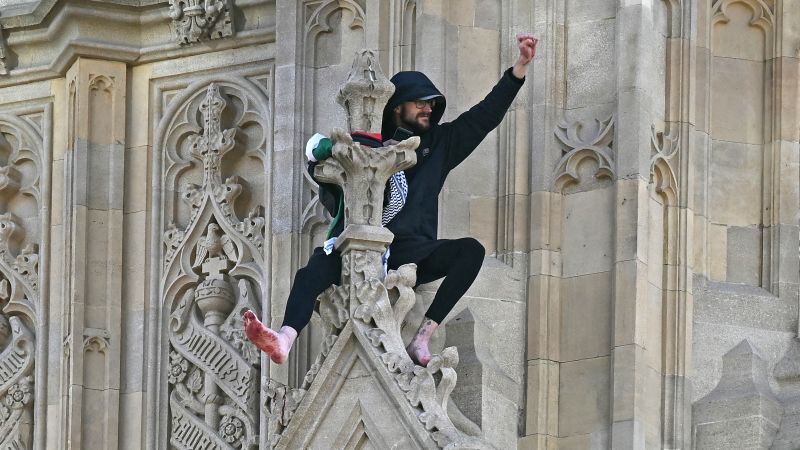Some storylines recycle through golf’s ecosystem with the dreary predictability of a Patrick Reed lawsuit filing. The now annual Tiger Woods comeback is one, with attendant speculation about whether a man more compromised than, well, a Patrick Reed lawsuit, can actually win again. Rory McIlroy’s yearly tilt at the Masters is too, invariably followed with commentary about pressure and perspective (neither of which is induced by a Patrick Reed lawsuit). Another tried-and-true narrative has been making the rounds again this week: What can be done to salvage the Presidents Cup?
The biennial contest pitting the United States against an International team (drawn from everywhere bar Europe) is often entertaining but seldom competitive. The Internationals’ only win was in 1998. They have now suffered 10 consecutive defeats — culminating in last weekend’s 18.5 to 11.5 loss at Royal Montreal. It was a whupping, no matter how many soft-pedalers say things were closer than the scoreline implies.
Debates over how to address the imbalance can be as animated as the actual matches. Suggestions include reducing the number of points contested to accommodate the lack of depth on the International bench (that has already been tried, going from 34 points to 30 in ’15); shortening the duration (from four days to three); changing the format (by making it a co-ed event with top women golfers); and binning it entirely.
One potential change that hasn’t gotten due consideration is this: ownership.
The Presidents Cup belongs to the PGA Tour. It was created in the waning hours of Deane Beman’s tenure as commissioner and first staged under his successor, Tim Finchem, who was eager to mooch whatever revenue he could from the enthusiasm around team golf generated by the Ryder Cup. The Tour decides who captains both teams, who is eligible to play on both teams, and where the competition will take place. Golfers who defected to LIV — like Cameron Smith, Joaquin Niemann and Abraham Ancer — are ineligible, making what was a tough task nigh on impossible for the International team, though to be fair they were waxed with even more impressive line-ups before LIV.
Last year, the ex-player and now board member of PGA Tour Enterprises, Joe Ogilvie, sent his fellow Tour members a letter outlining the impact of accepting private investment, which happened months later. He listed a number of assets the Tour owned and mused on their worth and growth potential. He included the Presidents Cup and mentioned it again in a subsequent appearance on Golf Today. The event, Ogilvie seemed to be suggesting, had unrealized value. Which raises a delicate question: In whose hands?
If the Tour sold half of the Presidents Cup — and accepted having no influence over the International side — then new owners could establish fresh eligibility criteria, select captains, install dedicated management, assign resources, create a P&L and assume decision-making authority, including for overseas media rights and negotiations with venues outside the U.S. In short, do exactly what Europe does with the Ryder Cup.
Would that make things more competitive? It couldn’t hurt. And it would at least end the charade that the Presidents Cup is a global vehicle by actually making it so. Of the last five international venues, two were 30 miles from the U.S. border in Montreal and two more were in Melbourne, Australia — a marvelous city, but not exactly groundbreaking for those trying to evangelize golf around the world.
Perhaps the Strategic Sports Group chaps have run the numbers to arrive at a valuation of the Presidents Cup’s International component, but it’s surely nine figures and with better potential for long-term returns than any nine-figure LIV contract that expires after a few years. So who could buy it?
The most obvious candidate — and least appealing for those concerned with mundanities like human rights — is the Public Investment Fund of Saudi Arabia. But there are plenty of alternatives who are invested in golf and who preach a gospel of global growth.
One such man, South African billionaire Johann Rupert, is hosting the Dunhill Links Championship in St. Andrews this week. There’s Pawan Munjal, CEO of Hero MotoCorp and a familiar figure to fans through his relationship with Woods. Or Mexican tycoon Ricardo Salinas, who brought a WGC tournament to his homeland. Perhaps Abdullah Al Naboodah, an Emerati investor deeply involved with the DP World Tour, or Korean industrialist Jin Roy Ryu, who underwrote the ’15 Cup in Seoul. Heck, even Chinese-Thai businessman Chanchai Ruayrungruag, a colorful eccentric who purchased Wentworth Golf Club a decade ago and proceeded to oust many of its members. (I once attended an evening at which he elbowed China’s premier opera soprano aside on a Beijing stage so he could sing himself, the sound of which surely had every cat owner within earshot wondering if their pet was being garroted.)
That’s all to say there’s no shortage of astute businessmen who are confessed fanatics about golf and who might see value in an established platform with 30 years of history and a solvent partner in the PGA Tour. Unshackling the International side may be the best move to positively impact the Presidents Cup both as a competition and a commercial property, while simultaneously paying more than lip service to the goal of globalizing the sport in a meaningful manner.
One of those aforementioned golf-crazed billionaires ought to send Jay Monahan a copy of Richard Bach’s bestseller Jonathan Livingston Seagull and highlight his oft-quoted line: “If you love something, set it free.”












